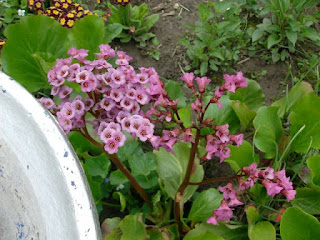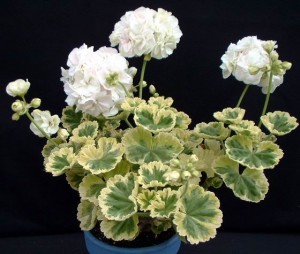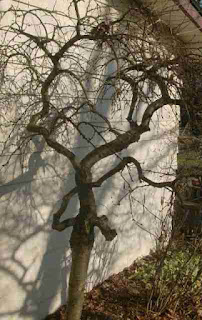BERGENIA is a very hardy plant in our zone throughout southern Ontario and doesn’t die back like many of the perennials do. It has thick leathery evergreen leaves and creeps along the ground sending large black rhizomes that root as they spread. The baby plants are very easy to dig up and transplant in spring. They like rich sandy soil, in part sunny locations in the garden. Once they are well rooted and established you can leave them to grow on their own. The blooms grow in large clusters, with tiny pink flowers. It forms it’s flowers early in April and goes on through May. The plants are fairly low growing, and only reach to about 6 to 8 inches in size but are well worth planting for their spring color.
Bloodroot is another unusual plant that sends up tiny blooms in early spring, then as the blooms die back to form seed pods the leaves unfurl.
SOLOMON SEAL is another very hardy easy to grow plant that is great for the back of borders or rock gardens. They do well along foundations or in mostly shady spots. They can reach as high as 24 inches and can have plain leaves or variegated. Tiny white bell flowers hang along the tall stems, starting in May and into June. They thrive and spread by underground root stolons and are very hardy perennials that you can dig and divide when they start to spread.
Primroses add so much color to a spring garden because they are available in solid and bi-colors.
DROPWORT is also called meadowsweet and is a native plant that was used for making medicine or eaten raw in salad. The leaves have a wintergreen smell and flavor. This plant has cut leaves that are fern like and 30 inch tall stems with large clusters of flowers in pink and white, starting in May. The underground tubers are hardy and easy to dig for division in spring. They grow in part sun, shade or full sun locations in any type of soil.
LUNGWORT also starts to blooms along with the spring bulbs and lasts until the hot weather in June arrives. Trim off the dead blooms and it will send out new larger spotted leaves for a very long time. It comes with pink, purple or pure white blooms.
LILY of the VALLEY is a spring flower and is poisonous to people and pets. The flowers are white bells and have been used in perfume or hand lotion for centuries. They grow in mostly shady poor to medium soil, reaching 5 or 6 inches tall and spread with underground roots and stolon. The flowers are very fragrant and bloom from May to June. This plant has been used for scenting powders, soaps and perfume for over one hundred years.

















